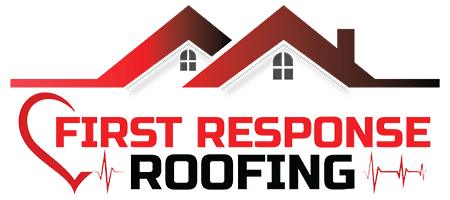Large-scale roofing projects take more than just bigger tools and longer timelines. They’re complex jobs that require careful planning, strong coordination, and experience working on structures that are often more difficult to access or maintain than smaller homes. From schools and warehouses to office buildings and apartment complexes, these projects present a different challenge altogether.
Skipping steps or cutting corners on this scale can lead to bigger issues down the line such as cost overruns, safety risks, and structural damage. That’s why expert solutions matter. When a roof covers thousands of square feet and supports essential systems underneath, every detail counts. The good news is that with the right approach, even the most complicated project can stay on schedule and meet performance needs.
Planning And Preparation For Large-Scale Projects
Every successful commercial roofing project begins with solid preparation. This includes a full site assessment, clear planning strategies, and a well-defined timeline that takes both cost and logistics into account. Unlike residential work, commercial roofs offer different challenges due to their size, design, and how the space beneath is used.
Here’s a breakdown of some key planning steps involved:
1. Site assessment: A detailed inspection of the current roof and building structure lays the groundwork for all decisions to follow. It’s important to evaluate structural supports, drainage issues, and any access limitations.
2. Customized strategy: Each large-scale building serves a different purpose. A retail center, a school, and a warehouse will not have the same needs or challenges. Developing a custom plan tailored to a building’s structure and use helps reduce delays and avoid mid-project changes.
3. Timeline and budget: Mapping out each phase ahead of time helps minimize risks. Key stages include delivery planning, crew scheduling, material staging, installation flow, and inspections. Setting a realistic budget that includes contingencies gives everyone a firm foundation to work from.
One example that stands out is a commercial complex that remained open during a re-roofing project. The planning team had to factor in safety zones for parking, noise control for businesses, and off-hour work shifts to avoid disrupting tenants. Without detailed planning, those needs may have derailed the schedule and increased costs. Every successful roof starts long before the first crew member steps on site.
Material Selection And Sourcing
Choosing the right roofing materials can make or break a large-scale project. It’s not just about the look. You need materials that can handle the wear and tear, weather, and function of the building for years to come. Commercial properties often need specific roofing types that can withstand more foot traffic, support heavy equipment, or meet strict environmental goals.
Here are a few common material options and why they’re often selected:
- TPO (Thermoplastic Olefin): A bright, reflective roofing membrane that offers good energy savings. It’s lightweight and resists dirt, algae, and UV exposure.
- EPDM (Ethylene Propylene Diene Monomer): A strong and flexible rubber surface. Works well for low-slope situations and stands up to a lot of movement and activity.
- Metal Roofing: Durable, fire-resistant, and long-lasting. Metal panels work well for buildings that need strong weather protection and often fit well with industrial designs.
- Modified Bitumen: Known for flexibility and strength, especially useful for flat roofs where seams and waterproof seals are a central concern.
Material choices also depend on climate, expected foot traffic levels, and the shape or slope of the existing roof. For example, a roof with frequent HVAC service needs something sturdier to handle foot traffic. Decision-making doesn’t stop with choosing the material itself. Sourcing plays a heavy role too. Getting materials delivered on time and at the right quality level is a must. Waiting on one shipment or picking a cheaper product that doesn’t hold up can throw the job off balance and drive up costs later.
Expert Installation Techniques
Installing a roof on a large building is nothing like putting together shingles on a house. These jobs require specialized training, equipment, and crews that work in tight formation with strict procedures. That helps keep everything safe and results consistent time after time.
At this scale, no small detail can be overlooked. Proper sealing, insulation, equipment integration, and drainage all work together. If one step is skipped or done poorly, the consequences can snowball. Mistakes aren’t just inconvenient—they can be expensive and hazardous.
Here’s what expert installation on a large-scale site typically involves:
- Preparing the deck and inspecting substrate conditions before installing new material
- Using high-grade adhesives, welders, and application tools designed for commercial-scale performance
- Laying insulation and vapor barriers correctly to avoid issues with condensation or trapped moisture
- Planning water flow carefully with tapered insulation and drainage pathways
- Working alongside HVAC techs, electricians, or other professionals as needed
- Following safety protocols such as zone marking, harnesses, worker certifications, and equipment checks
A real-world example is a TPO roof installation completed on a warehouse space. The project involved dividing the roof into phases with multiple crews operating simultaneously. The material had to be laid down using precise heat-welding techniques, with overlaps measured to exact specs to ensure waterproofing. The layers underneath also needed fine-tuned preparation to support heavy water flow without pooling. Team communication, scheduling, and specialty equipment all played roles in keeping the job safe and moving on-time.
Maintenance And Long-Term Care
Once the roof is installed, the job isn’t done. Ongoing care is what keeps a commercial roof in good shape for years. These structures have to deal with sun, wind, heavy rain, and service traffic. Without regular maintenance checks, small issues like loose flashings or minor surface damage can quietly grow into larger problems.
Routine inspections and upkeep are key. Some trouble spots aren’t always visible from the ground level, and large-scale roofs are harder to eyeball fully without a system in place. Developing a regular care schedule helps find warped surfaces, watermarks, or buildup issues early.
A reliable long-term care plan should cover:
- Inspections twice a year, especially before and after seasons known for storms or heavy wind
- Cleaning drains and clearing leaves, branches, and dirt around HVAC units or service lanes
- Checking seams, membranes, and flashings for signs of loosening or wear
- Monitoring for bubbles, moisture pockets, or soft spots under foot
Staying on top of these upkeep tasks also protects any active warranties. Most manufacturers include maintenance clauses in their warranties, and missed visits might void coverage. Keeping logs of what’s checked and when it’s repaired gives building managers a clear map of the roof’s overall health.
Ensuring Success With Professional Help
Handling commercial roofing projects requires a trusted team that understands how to manage moving parts, plan for challenges, and protect the structure from top to bottom. It’s never just about laying down a roof and walking away. The process includes careful planning, smart material choices, advanced skills, and a plan for maintenance.
Commercial buildings have more at stake. From expensive tools and electronics to people and operations inside, the roof plays a much bigger role than just covering the space. Professional roofing solutions are made to address that complexity, reduce long-term risks, and help owners feel confident that their building is protected. Having the right professionals in your corner makes the process smoother, the workmanship stronger, and the outcome worth the investment.
Securing Your Investment With First Response Roofing
Choosing professional help for a large-scale roofing job isn’t just about convenience. It’s about protecting your building, your business, and the people who depend on both. When the job is done right, with smart planning and expert care, you end up with a roof that performs well now and holds strong for many years. Trusting experienced professionals like the team at First Response Roofing means those big jobs get the attention, skill, and follow-through they deserve.
Ready to take on your large-scale roofing project with confidence? Learn how expert commercial roofing solutions can bring the results you’re looking for. Trust First Response Roofing to handle every phase of the process with care, so your building stays protected long after the final inspection.

